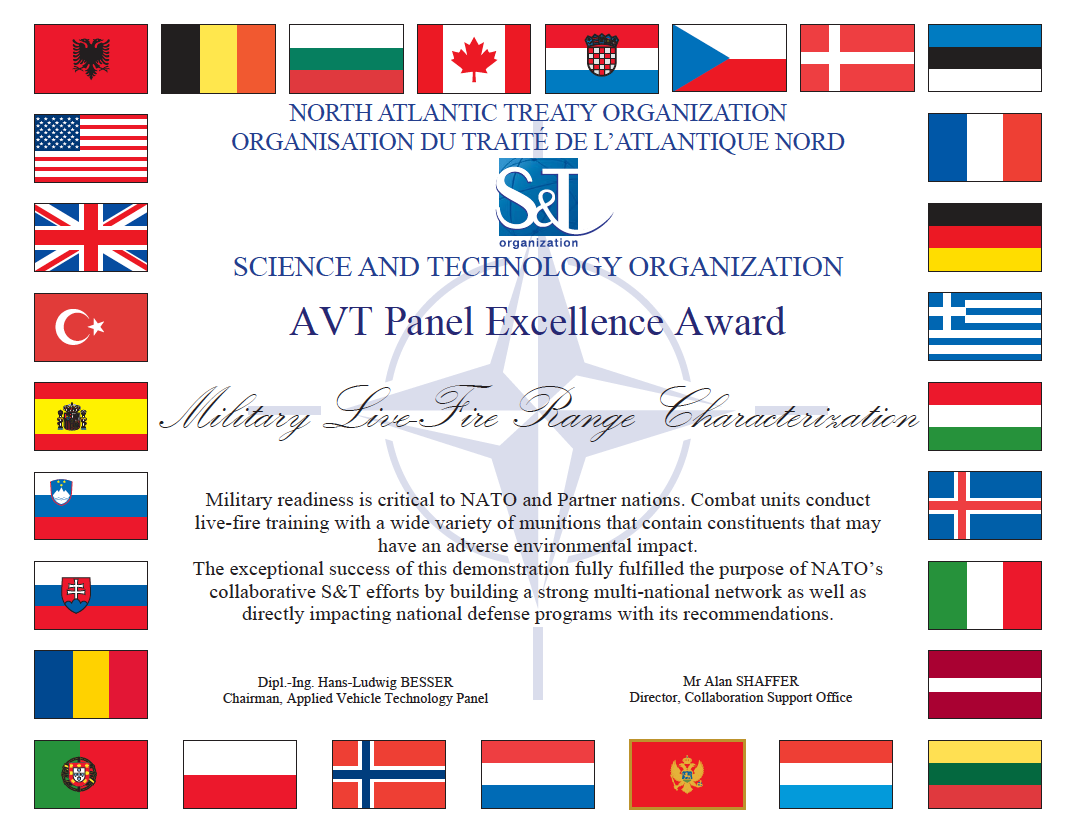Military readiness is critical to NATO and Partner
nations. Combat units conduct live-fire training with a wide variety of
munitions that contain constituents that may have an adverse environmental
impact. The higher training tempo and the arrival of new types of munitions in
military inventories add stresses to Ranges and Training Areas all across NATO
and Partner nations.
The exceptional success of the first Cooperative Demonstration of
Technology (CDT) on Military Live Fire Range Characterization resulted in a number of well-recognized scientific contributions and follow-on activities in NATO and
nations. Even more important is the fact that this demonstration fully
fulfilled the purpose of NATO’s collaborative Science & Technology efforts
by building a strong multi-national network as well as directly impacting
national defence programs with its recommendations. In recognition of the
outstanding work and significant scientific contribution, the Applied Vehicle
Technology (AVT) Panel presents the 2018 AVT Panel Excellence Award to the
AVT-249 Task Group on “Munitions Related Contamination: Military Live-Fire
Range Characterization”.

Figure 1: The 2018 AVT Panel Excellence Award presented to the AVT-249 Task
Group
On
30 September - 05 October 2018, the NATO Science and Technology Organization
(STO) will sponsor the second Cooperative Demonstration of Technology (CDT) on Military Live Fire Range Characterization at Cranfield University in the United Kingdom.
Many
nations are seeking range characterization techniques to improve their ability
to implement range mitigation strategies. This CDT presented state-of-the-art
characterization methods to better manage risks, preserve combat readiness and
reduce budget impacts due to the loss of range availability. Munitions
constituents from live-fire training adversely impact range environments and
have led to the loss of valuable training ranges and high environmental
liabilities; in just one case the costs were over 1.5B Euros.
The CDT commenced with technical classes, methods and shared discussions of the
latest range characterization methods. This CDT sprang from the (STO) Applied
Vehicles and Technology (AVT) Panel and was designed to allow practitioners to
improve their work.
https://www.youtube.com/watch?v=Tt7fA0XR7bU&feature=youtu.be
If you need any further information,
please do not hesitate to contact avt@cso.nato.int. |